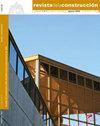稻壳灰和水泥用于路面路基材料的土壤稳定
IF 1.4
4区 工程技术
引用次数: 1
摘要
本研究采用稻壳灰和火山灰水泥作为土壤附加稳定材料。本研究的目的是评估作为路基路面材料的路堤土的承载力。土壤样本是从印度尼西亚日惹地区的两个不同地区,即沃茨和伊莫吉里地区收集的。本研究采用实验方法,定义了道路路基土路堤的梯形,顶部尺寸为10厘米× 20厘米,底部尺寸为(20厘米× 40厘米),高度为10厘米。此外,本研究的试件分为两组:1 cm厚砂基路堤和无砂基路堤。USCS将来自waters的样品分类为oh型或有机粘土,具有中至高塑性,AASTHO为A-7-5组(22)。Imogiri土壤被归类为无机粉土或含有OH团块的细硅藻砂,AASTHO将该土壤归类为A-7-5类(11)。稻壳灰和火山灰水泥作为稳定土材料的加入对土的工程性质,特别是对土的承载力和承载力比的影响都是适度的。这种稳定性也表明,稳定后的土的工程性能比未稳定的原始土有明显改善。本文章由计算机程序翻译,如有差异,请以英文原文为准。
Soil stabilization using rice husk ash and cement for pavement subgrade materials
This study employs rice husk ash and pozzolan cement as additional soil stabilization materials. This study aims to evaluate the bearing capacity of the soil to be used as embankment soil for subgrade pavement materials. The soil samples were collected from two different areas in the Yogyakarta region, Indonesia, namely the Wates and Imogiri regions. This study consists of experimental approach that defines a soil embankment for road subgrade with a trapezoid-shaped with top dimension of 10 cm x 20 cm, a base dimension of (20 cm x 40 cm), and a height of 10 cm. In addition, the specimens in this study were divided into two groups: the embankment with a 1 cm-thick sand base and the embankment without a sand base. The USCS classified the samples from Wates as OH-type or organic clays with moderate to high plasticity and by AASTHO as group of A-7-5 (22). The soil from Imogiri was categorized as inorganic silt or fine diatoms sand with OH clumps or AASTHO classified this soil as group A-7-5 (11). The addition of rice husk ash and pozzolan cement as stabilizing soil materials has a moderate effect on the engineering properties of the soil, particularly the bearing capacity and bearing capacity ratio of soil. This soil stabilization also demonstrates that the engineering properties of the stabilized soil significantly improved compared to the original soil without stabilization.
求助全文
通过发布文献求助,成功后即可免费获取论文全文。
去求助
来源期刊

Revista de la Construccion
工程技术-工程:土木
CiteScore
2.30
自引率
21.40%
发文量
0
期刊介绍:
The Journal of Construction is aimed at professionals, constructors, academics, researchers, companies, architects, engineers, and anyone who wishes to expand and update their knowledge about construction. We therefore invite all researchers, academics, and professionals to send their contributions for assessment and possible publication in this journal. The publications are free of publication charges.
OBJECTIVES
The objectives of the Journal of Construction are:
1. To disseminate new knowledge in all areas related to construction (Building, Civil Works, Materials, Business, Education, etc.).
2. To provide professionals in the area with material for discussion to refresh and update their knowledge.
3. To disseminate new applied technologies in construction nationally and internationally.
4. To provide national and foreign academics with an internationally endorsed medium in which to share their knowledge and debate the topics raised.
 求助内容:
求助内容: 应助结果提醒方式:
应助结果提醒方式:


